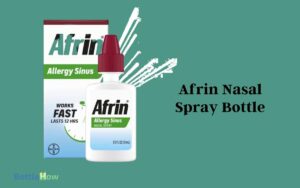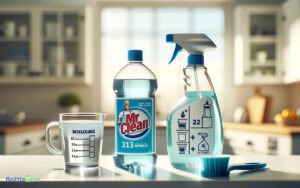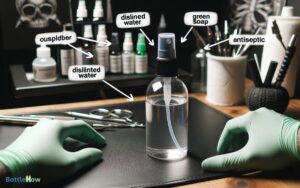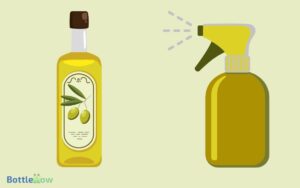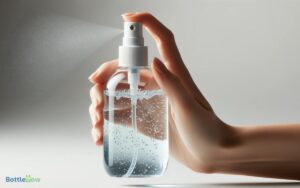Can You Put Lotion in a Spray Bottle? Yes!
You can put lotion in a spray bottle, provided you first adjust the lotion’s consistency to prevent nozzle clogs and guarantee smooth flow.
Typically, lotions with lower viscosity are best suited for spray bottles. To thin a thicker lotion, you might consider diluting it with distilled water, glycerin, or alcohol-based on the original lotion’s viscosity.
Select a spray bottle with a clog-resistant nozzle, and test the lotion flow to confirm it produces a uniform spray.
Regular cleaning of the bottle is essential to maintain its efficiency. Exploring further will reveal additional techniques and benefits for utilizing lotion in spray form.
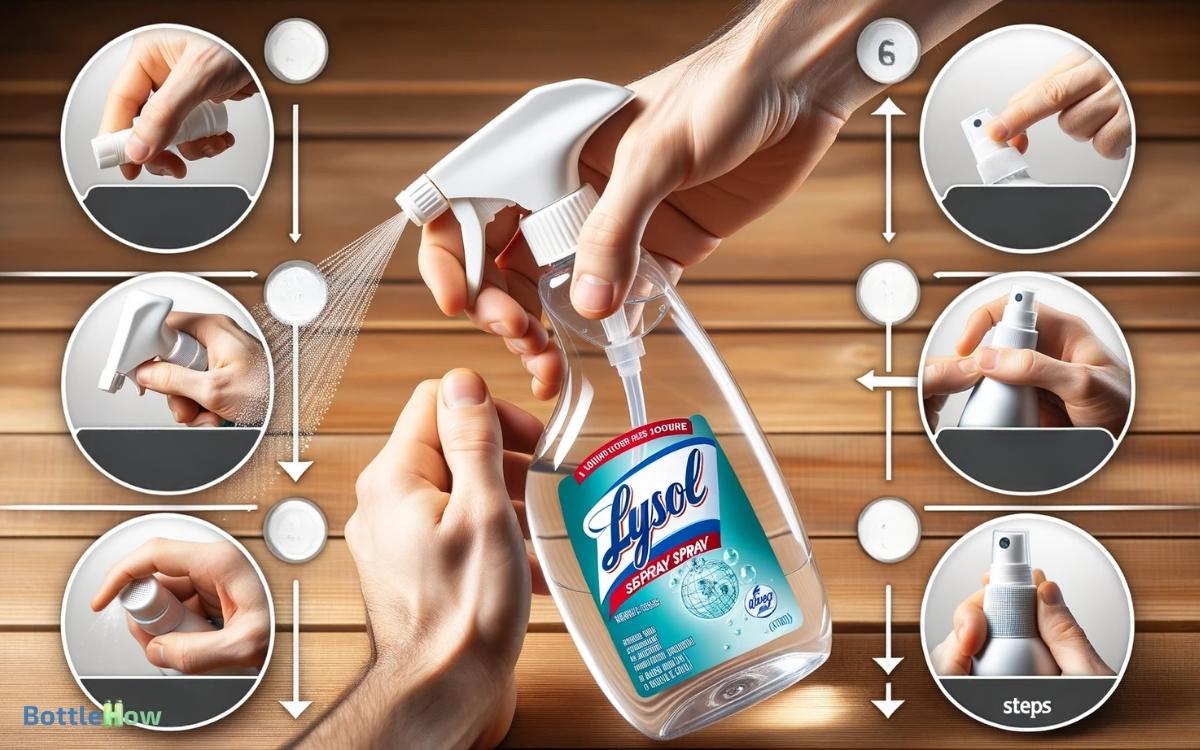
Key Takeaways
Understanding Lotion Consistency
To successfully transfer lotion into a spray bottle, you must first comprehend the specific viscosity of the lotion you’re working with. Viscosity refers to the thickness or thinness of a liquid, impacting its flow.
Lotions with higher viscosity won’t easily pass through spray nozzles, causing clogs and inconsistent spray patterns.
Conversely, lotions that are too thin might spray too freely, leading to wastage and inadequate application.
You’ll need to assess whether the lotion’s consistency is suitable for a spray mechanism or if it requires thinning.
Remember, altering the lotion’s consistency involves carefully balancing its ingredients to maintain effectiveness while ensuring it can be evenly and efficiently dispensed to serve your clients’ needs optimally.
Choosing the Right Spray Bottle
Choosing the suitable spray bottle is important for the efficient dispensation of your lotion. When selecting the perfect container, consider these technical aspects:
- Material Transparency: Opt for clear bottles to monitor lotion levels easily.
- Nozzle Type: Choose nozzles that can handle thicker liquids without clogging.
- Bottle Size: Select a size that balances portability with sufficient lotion supply.
- Material Compatibility: Ensure the bottle material is compatible with lotion ingredients to prevent chemical reactions.
- Ease of Use: Look for bottles that are easy to refill and maintain.
These factors are essential to make sure that you can serve others effectively, by providing a seamless and functional tool for lotion application.
Benefits of Lotion in Spray Form
You’ll find that using lotion in spray form greatly enhances application efficiency. The spray mechanism allows for uniform coverage, ensuring that all skin areas receive an equal amount of product.
Additionally, the portability of spray bottles makes them ideal for convenient usage on-the-go, fitting effortlessly into your daily routine.
Enhanced Application Efficiency
By converting lotion into spray form, you greatly enhance application efficiency, ensuring even coverage with minimal waste.
This method not only conserves the product but also speeds up the application process, making it ideal for fast-paced environments like healthcare or hospitality where time and resource conservation are paramount.
Here are key benefits from a technical perspective:
- Reduced Product Waste: Precise dispensing minimizes excess.
- Faster Application: Streamlines the process, saving valuable time.
- Measured Dispensing: Allows for controlled usage, preventing over-application.
- Ease of Use: Simplifies the application method, requiring less manual effort.
- Hygienic Application: Minimizes cross-contamination risks by avoiding direct contact with the container.
This strategic approach ultimately supports efficient service delivery in professional settings.
Uniform Coverage Achieved
In addition to enhancing application efficiency, using lotion in spray form guarantees consistent coverage across all skin areas.
When you apply lotion traditionally, it’s easy to miss spots or apply unevenly, which can lead to patchy hydration or protection.
However, the atomization of lotion into fine mist by a spray mechanism enables a uniform distribution.
This consistent layer ensures that all areas of your skin receive an equal amount of product, maximizing the lotion’s effectiveness.
You’ll appreciate how this method not only conserves lotion by preventing over-application but also targets hard-to-reach areas effortlessly.
It’s a perfect solution for ensuring thorough skin care, particularly beneficial in clinical settings where meticulous skin treatment is paramount.
Convenient Usage On-the-Go
Carrying and applying lotion becomes hassle-free with spray bottles, ideal for travelers and active individuals who need quick skin hydration.
Utilizing a spray mechanism for lotion offers several practical benefits:
- Portability: Spray bottles are typically more compact and lightweight, making them easy to transport in a purse or backpack.
- Speed: You can apply lotion quickly with a simple spray, saving time during your daily routine.
- Hygiene: Minimizes direct contact with the lotion, reducing the risk of contamination.
- Controlled Application: Guarantees a more controlled and even distribution of lotion across your skin.
- Accessibility: Easier to use for those with limited mobility in their hands, such as arthritis sufferers.
Each aspect is designed to enhance your ability to care for yourself and others efficiently.
Step-by-Step Thinning Process
To start thinning your lotion for a spray bottle, first measure approximately one part distilled water to three parts lotion. Make sure that you’re using a clean, dry measuring cup to avoid contamination.
Gradually mix the water into your lotion in a larger bowl, stirring consistently to maintain an even consistency.
Use a whisk or a hand mixer on a low setting to better integrate the water and lotion, thereby preventing separation.
Once fully mixed, test the consistency by pouring the thinned lotion through a funnel into the spray bottle.
If it flows smoothly without clogging, you’ve achieved the desired consistency. If not, you may need to adjust the ratios slightly, adding more water or lotion accordingly.
Suitable Types of Lotions
Several types of lotions are particularly well-suited for use in spray bottles, including lightweight, water-based moisturizers that blend easily with water.
When selecting lotions for this purpose, you’ll want to make sure their formulations are conducive to a fine mist application without clogging the spray mechanism.
Here are the ideal types:
- Hydrating Lotions: Typically contain hyaluronic acid or glycerin, facilitating smoother sprayability.
- Soothing Lotions: Often feature ingredients like aloe vera or chamomile, perfect for calming irritated skin.
- Balancing Lotions: Designed for oil control, suitable for oily or combination skin types.
- Sunscreen Lotions: Liquid or light emulsion sunscreens can be effectively dispersed.
- After-Shave Lotions: These generally have a thinner consistency, perfect for an invigorating mist post-shave.
Common Thinning Agents
After selecting a suitable lotion, you’ll need to contemplate thinning agents to ensure smooth sprayability.
Distilled water is a primary choice due to its purity and neutrality, ensuring it won’t react with the lotion’s components.
However, the exact proportion depends on the lotion’s initial viscosity. Another option is glycerin, which, besides thinning, offers additional moisturizing benefits, enhancing the lotion’s inherent properties.
Alcohol can also serve as a thinning agent, particularly if you’re aiming for a quick-drying spray solution, but it’s important to use it sparingly to prevent skin dryness.
Each agent affects the lotion’s texture and efficacy, so you’ll need to take into account the desired outcome and the specific needs of those you’re serving.
Testing Lotion Flow
Before using your newly thinned lotion, you’ll need to test the flow to make sure it sprays evenly from the bottle.
This step is vital to guarantee efficient and uniform application, essential in service-oriented environments where time and precision matter.
Here’s how to proceed:
- Check Viscosity: Ensure the lotion is fluid enough for the spray mechanism.
- Nozzle Examination: Inspect the spray nozzle for any clogs or damage.
- Spray Pattern: Test the spray to observe the pattern it forms.
- Pump Functionality: Verify that the pump dispenses smoothly without extra force.
- Coverage Area: Spray on a test surface to assess the area covered by the mist.
This procedure helps secure a consistent and professional application.
Solving Common Spray Issues
You’ll often encounter issues with nozzle clogs and inconsistent lotion dispersion when using a spray bottle.
To prevent these problems, it’s important to understand the viscosity of your lotion and adjust the spray mechanism accordingly.
Ensuring the nozzle is regularly cleaned and checking the lotion’s formulation for compatibility with spray dispensing are essential steps to maintain smooth operation.
Preventing Nozzle Clogs
To prevent nozzle clogs when using lotion in a spray bottle, make sure the lotion’s viscosity is suitable for spraying. If the lotion is too thick, it can lead to blockages that impede your ability to deliver care effectively.
Here are practical steps to guarantee the lotion you use remains sprayable and free from obstructions:
- Dilute Thick Lotions: Mix with a suitable thinner, such as distilled water, to achieve a more fluid consistency.
- Strain Mixtures: Pass the lotion through a fine mesh to remove particulates.
- Regular Cleaning: Disassemble and clean the nozzle and tube with warm soapy water.
- Use Surfactants: Add a small amount of surfactant to reduce surface tension.
- Test Spray: Regularly test the spray function to catch issues early.
These measures help maintain a functional spray mechanism, enhancing your ability to assist effectively.
Ensuring Smooth Dispersion
Guaranteeing your lotion sprays evenly can often hinge on addressing common issues that impact the spray mechanism’s efficiency.
First, you’ll need to verify the viscosity of your lotion. If it’s too thick, consider diluting it with a suitable agent like distilled water or aloe vera juice to achieve a consistency that doesn’t compromise the lotion’s quality but improves its flow through the nozzle.
Next, regularly clean the spray bottle‘s nozzle to prevent buildup, which can obstruct the spray pattern and volume. Use a small brush or a pin to clear any residue.
Additionally, make sure the tube inside the spray bottle reaches the bottom and isn’t bent or obstructed. This ensures maximum uptake and consistent spray output.
Maintaining Your Spray Bottle
Regularly cleaning your spray bottle prevents clogging and guarantees top performance. To maintain your spray bottle effectively, you’ll need to implement a structured cleaning routine.
This involves disassembling the bottle and carefully cleaning each component. Here’s a precise guide to follow:
- Disassemble: Separate the nozzle, tube, and bottle.
- Rinse: Flush each part with warm water to remove lotion residues.
- Clean: Use a mild detergent and a small brush to scrub components.
- Dry: Air dry parts completely before reassembly.
- Inspect: Check for wear and tear regularly to make certain functionality.
This methodical approach ensures that your tool remains efficient, serving your needs and those you care for with uninterrupted performance.
Creative Uses for Spray Lotions
Spray lotions offer versatile applications beyond simple skin hydration, including use as a lightweight hair conditioner or a quick fabric freshener.
When you’re aiming to detangle or add a light sheen to your hair, a fine mist of diluted lotion can serve as an effective leave-in conditioner.
This not only moisturizes but also facilitates smoother combing and styling without the heaviness typical of many hair products.
Moreover, spray lotions can be utilized to refresh fabrics. A light spritz on linen or clothing not only imparts a pleasant fragrance but also helps to reduce static cling, enhancing comfort for those you serve.
This method is particularly useful in settings where quick, efficient solutions are valued, such as hospitality or client-facing roles.
Potential Drawbacks to Consider
You might encounter increased clogging risk when using lotion in a spray bottle due to the viscous nature of most lotions.
The quality of the spray can be inconsistent, affected by the specific consistency and components of the lotion.
Additionally, the chemical stability of the lotion may be compromised when exposed to air in a spray mechanism, potentially altering its effectiveness and safety.
Clogging Risk Increases
Why might transferring lotion to a spray bottle lead to increased clogging issues? When you consider the viscosity and ingredients of most lotions, they’re not inherently designed for spray mechanisms, which can lead to frequent clogs.
Here’s a deeper look at the factors:
- Viscosity: Lotions are thicker than typical sprayable liquids.
- Particle Size: Lotion can contain larger particles that are more likely to block the spray nozzle.
- Oil Content: High oil content in lotions can accumulate and harden, obstructing the spray mechanism.
- Emulsions: Lotions are emulsions that can separate under pressure, contributing to uneven flow.
- Additives: Ingredients meant to moisturize and thicken can build up, narrowing the passage in spray nozzles.
Understanding these factors helps in providing better service and solutions to those you aid.
Inconsistent Spray Quality
Transferring lotion to a spray bottle often results in inconsistent spray quality due to the mixture’s viscosity and particle composition.
When you attempt this, the varying thickness and particulate size of lotions can lead to uneven distribution.
This inconsistency can be detrimental in settings where precise amounts of lotion are essential for patient care or cosmetic applications.
Additionally, lotions designed to be applied directly mightn’t contain emulsifiers suitable for nebulization.
This lack of compatibility can result in sprays that don’t cover the intended area effectively, potentially leading to wastage and inadequate application.
You might also experience changes in the performance of the spray mechanism over time, complicating consistent application.
Hence, careful consideration is required before adapting lotions for spray use.
Chemical Stability Concerns
Beyond the issues of inconsistent spray quality, another significant concern when putting lotion in a spray bottle is the potential impact on the chemical stability of the product.
The formulation of lotions is carefully balanced, and altering the container can lead to several issues:
- pH Shifts: Exposure to air can alter the pH, potentially causing irritation or decreased effectiveness.
- Preservative Efficacy: Compromised container integrity might reduce the effectiveness of preservatives, leading to spoilage or contamination.
- Ingredient Separation: Active ingredients may separate, settling differently in a spray mechanism.
- Oxidation: Increased exposure to oxygen can degrade certain components, diminishing the product’s quality and safety.
- Light Exposure: Transparent bottles may expose sensitive ingredients to light, accelerating degradation.
You’re tasked with ensuring not only effectiveness but also safety. Carefully consider these factors.
Conclusion
Now that you’ve mastered the art of transforming traditional lotions into a revolutionary spray form, you’re equipped to enjoy the unparalleled convenience and efficiency it brings.
Remember, maintaining the perfect viscosity and regular cleaning of your spray bottle are vital for a flawless application every time. Embrace this game-changing method, but be mindful of the few potential drawbacks. Improper transfers, such as spraying perfume into another bottle, can lead to unnecessary evaporation or altered fragrance notes over time. To preserve the integrity of your scent, always use a funnel or specialized refill tool when transferring liquids. By following these best practices, you can ensure a consistent, luxurious fragrance experience with every application.
With these tips, your lotion application will be as smooth as silk and as invigorating as a gentle breeze.

